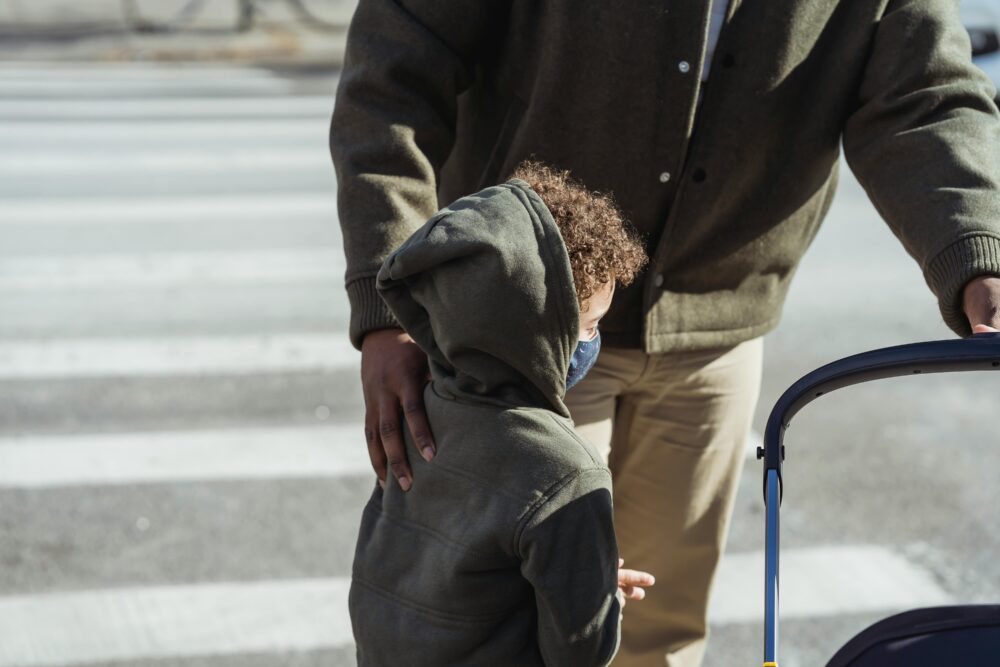Disconnected: The Pandemic’s Toll on Attendance for Students in Shelter
According to monthly attendance data released by the New York City Department of Education (DOE), students living in homeless shelters had significantly more difficulty accessing an education than their permanently housed peers in winter and spring 2021.

Advocates for Children of New York (AFC) released a new policy brief documenting the pandemic’s heavy toll on school attendance for students living in homeless shelters and calling on the New York City Department of Education (DOE) to direct federal COVID-19 relief dollars to overhaul the education support system in shelters, starting with hiring 150 shelter-based DOE community coordinators.
The brief, which examines monthly attendance data released by the DOE pursuant to Local Law 10 of 2021, shows that students in shelter had significantly more difficulty accessing an education than their permanently housed peers during winter and spring 2021. Between January and June, overall monthly attendance rates for students in shelter were lower than those for any other student group and trailed attendance rates for students in permanent housing by 10.6 to 14.1 percentage points, depending on the month. While the lack of internet access in some City shelters undoubtedly had an impact on remote attendance, the attendance rate for students living in shelter who opted for blended learning (some days in school and some remote) was just 2.3 to 4.3 percentage points higher on their in-person days than on their days of remote learning.
There were especially high rates of absenteeism at the high school level: 10th graders living in shelter missed more than one out of every three school days in winter and spring 2021, while 9th, 11th, and 12th graders in shelter were absent more than 25% of the time.
While the attendance rates of students in shelter during the pandemic were particularly troubling, barriers to consistent attendance are not new. In both 2018-19 and 2019-20, more than half of students living in shelter—94% of whom are Black or Hispanic—were chronically absent, missing at least one out of every ten school days.
Unfortunately, this trend has continued into the start of this school year; the average attendance rate of students in shelter during the first couple of weeks of school was only 73%.
“Children get one shot at a quality education, and every day a student is absent is a day of instruction they can never get back. These alarmingly low attendance rates make clear that the DOE’s current shelter-based support system is not sufficient. There need to be dedicated, well-trained staff on the ground in the City’s shelters who can help students reconnect with school and access the educational supports they need to get back on track.”
Jennifer Pringle, Director of AFC’s Learners in Temporary Housing Project
At present, there are not enough staff working in shelters who have the skills and knowledge necessary to help families navigate the school system, address barriers to attendance, and resolve educational problems: just 117 shelter-based DOE Family Assistants are tasked with supporting the roughly 30,000 students who spend time in shelter each year. The number of Family Assistants has not grown over the past decade even though thousands more students are now spending time in the shelter system than in years past. As there are more than twice as many shelters as there are Family Assistants, these staff must divide their time among multiple shelter sites and are stretched very thin. The Family Assistant position is also very low paid ($28,000 for 10 months), making it difficult to recruit and retain qualified staff for the role.
Fortunately, New York City is poised to receive tens of millions of dollars in federal COVID-19 relief funding specifically to address the needs of students experiencing homelessness—and the City has not yet decided how to allocate these funds. AFC, in partnership with 25 organizations, is recommending that the DOE use this funding to hire 150 new community coordinators to work on the ground in the City’s shelters and help students get to school every day.
These coordinators would proactively assist families with getting school placements, bus service, and special education services in place as quickly as possible upon entering shelter and for the start of each school year; ensure that students are attending school regularly and help address barriers when students are not getting to school; and connect students to after-school programs, tutoring, counseling, and other supports.
“New York City has long struggled to meet the needs of students living in shelter, and the pandemic has only exacerbated the many challenges these young people face,” said Pringle. “The good news is that the City now has funding to hire a new team of professionals who can help students succeed in school and break the cycle of homelessness.”
-
View the press release as a PDF
October 18, 2021
Media Coverage
-
Attendance falls for homeless students in N.Y.C., in part because of the pandemic, a study shows.
-
Attendance lags for homeless NYC students amid COVID pandemic: report


